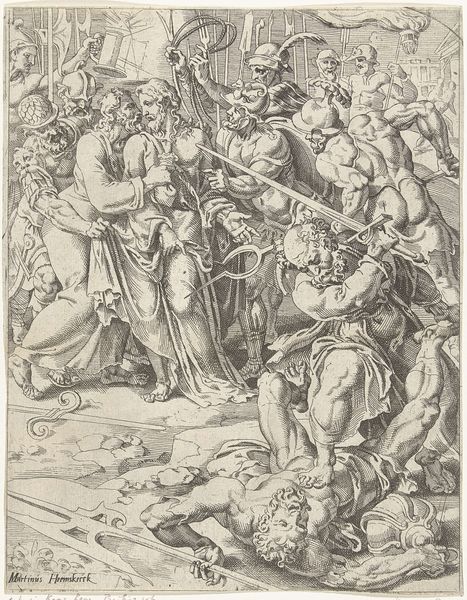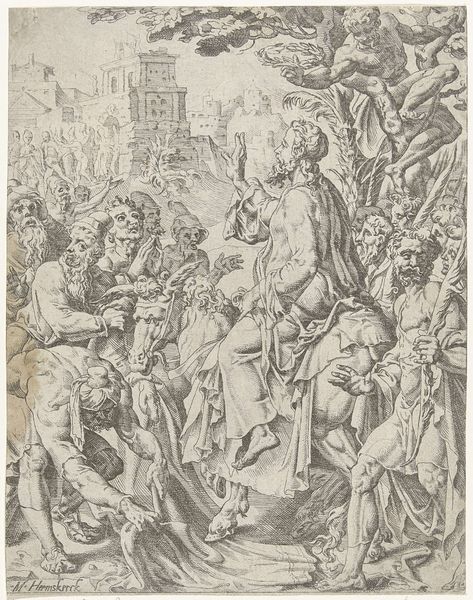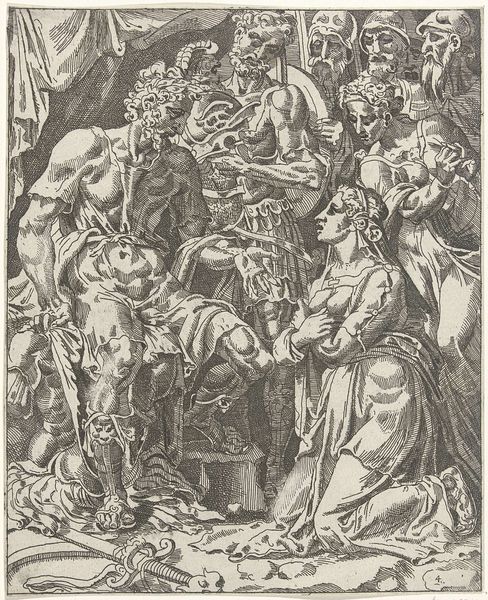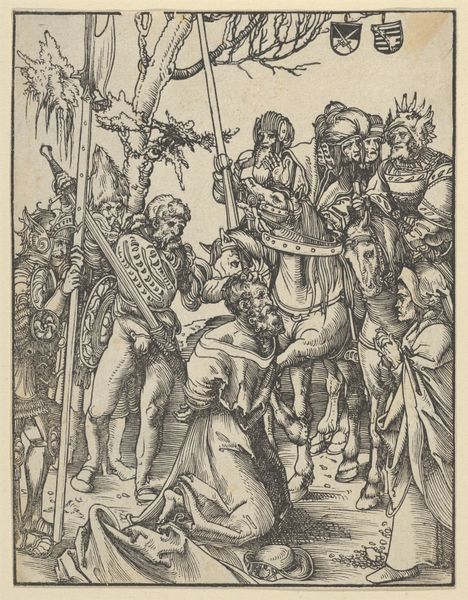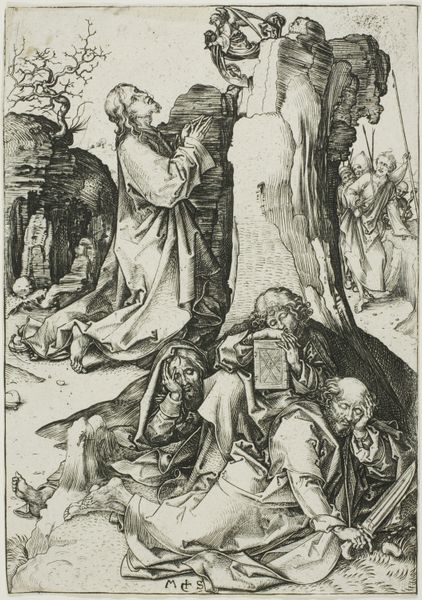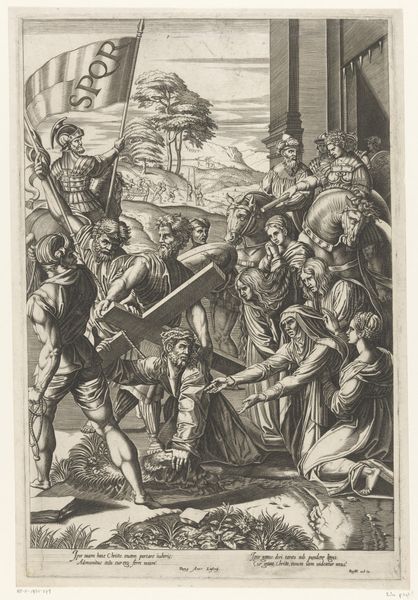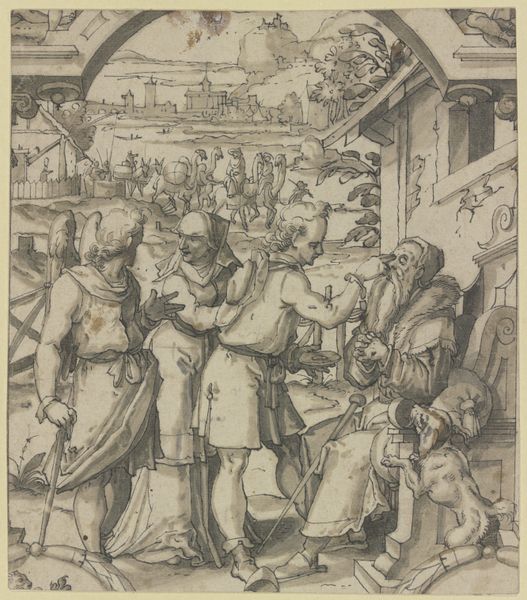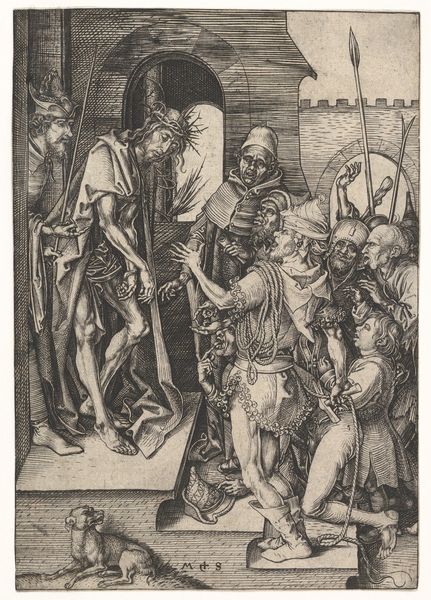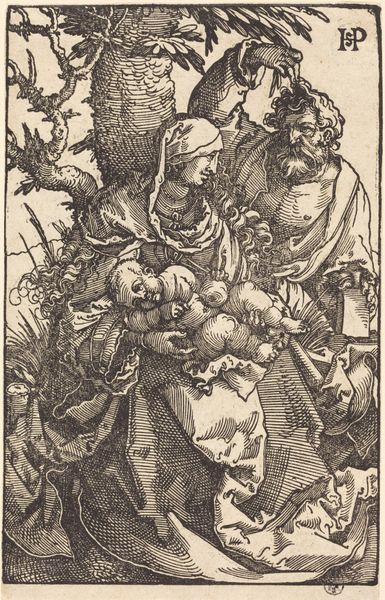
drawing, print, paper, engraving
#
drawing
#
medieval
#
narrative-art
# print
#
figuration
#
paper
#
history-painting
#
northern-renaissance
#
engraving
Dimensions: 164 × 117 mm (sheet trimmed within platemark)
Copyright: Public Domain
Editor: So, this engraving, "The Betrayal of Christ," by Martin Schongauer, dates back to around 1480. The detail is astonishing. All the figures crammed into the composition – it creates this feeling of chaos, of everyone closing in. What catches your eye when you look at this piece? Curator: The fascinating thing about this print is how Schongauer situates a religious event within a very specific, emerging social context. The late 15th century saw the rise of printmaking as a powerful tool for disseminating ideas, including religious narratives, to a wider public. Consider the role of art, like this, as a crucial ingredient for popular understanding of politics of the time. What message do you think this level of accessibility sends? Editor: Well, if more people are seeing this imagery, then their personal relationship with these well-known narratives could change. It isn't only the wealthy elites who get to decide the image of Christ, for instance. Is it the artist taking a political stand? Curator: Perhaps. What I find particularly telling is the level of violence depicted, not just towards Christ but towards those who would defend him. It hints at anxieties about social order, and the perceived threat to traditional values, doesn't it? How would such intense imagery function politically? Editor: Seeing the turmoil makes the moment feel more real. Instead of a distant, idealised scene, we have something far messier, possibly something people relate to because conflict was so normal in medieval times. Perhaps this explains its popularity at the time? Curator: Precisely. Its influence speaks to the power of printmaking to shape public opinion and the very real impact of imagery on the social fabric. These aren’t just illustrations; they're reflections and active shapers of cultural identity and religious understanding. Editor: This really makes you think about how people experienced this story. The distribution makes so much more sense considering the politics and the everyday life. Thanks. Curator: Indeed. And that's why understanding the historical context can illuminate so much about a work of art, connecting it to the bigger story of its time.
Comments
No comments
Be the first to comment and join the conversation on the ultimate creative platform.
